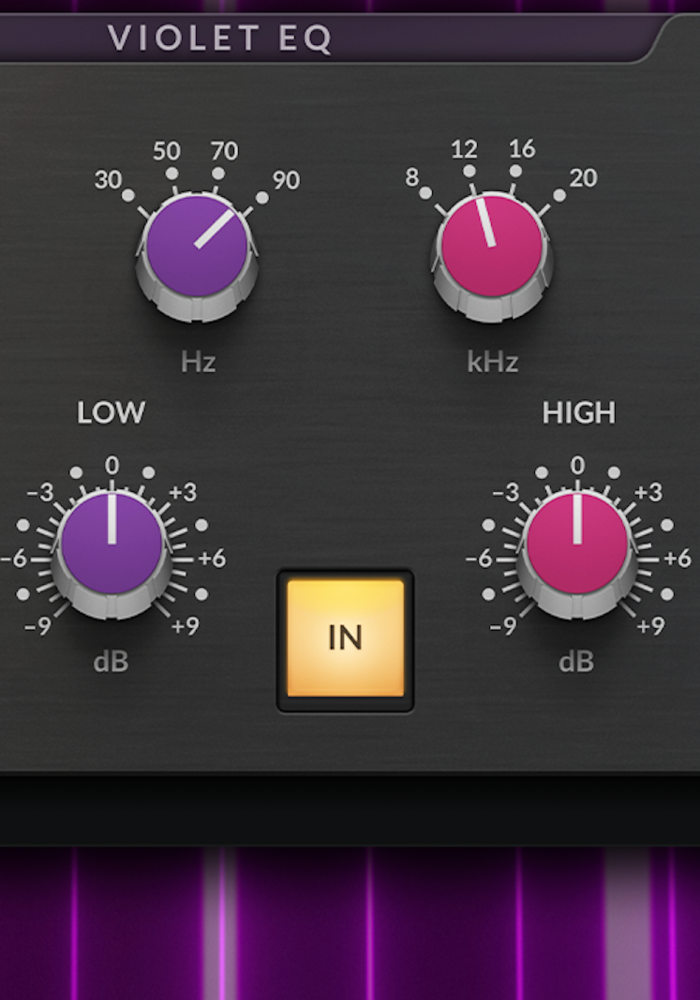Solid State Logic’s new Fusion Violet EQ is a 2-band minimum phase-shift shelving EQ from the critically acclaimed Fusion Stereo Analogue Colour processor. Being the first SSL analogue EQ design in more than 25 years, Headliner just had to see what all the fuss is about…
SSL’s Fusion Violet EQ is the latest plugin to emulate a big slice of the Fusion cake, and the first emulation of analogue EQ circuitry we have seen from SSL for some time. Circuitry which also features as part of SSL’s equally respected UltraViolet 500 series stereo EQ module. What’s more, if you already subscribe to the SSL Complete Subscription Bundle, this new plugin won’t cost you a bean!
Firstly, for those not in the know, the ‘Fusion’ analogue hardware device is aimed squarely at the mastering industry, but has created somewhat of a stir among individuals who are looking to improve their skill set and try their hand and ears at mastering. It brings together a number of circuits for which SSL is well known, like its signature Saturation, together with a couple of new ones like the Violet EQ.
Master Stroke
Fusion Violet EQ is designed to emulate the minimum-phase shift shelving filters of the original hardware. Four selectable frequencies across two bands with complementary response curves help to add low end weight or gentle reduction of low frequencies if needed, and likewise in the high end to add air and crispness to a mix.




